Rainforest Plants J - Ngadjon Names and Uses
to Alphabetical
List of Scientific Names...
Plants A-D
Plants E-I
Plants J (this page...)
Plants K-Z
| Ngadjon Name | Image | Use |
|---|---|---|
| jaanggany Alstonia scholaris Milky Pine |
|
The soft white wood was used as the base-plate for fire-making.
See Firemaking. The white sticky sap was used as a glue for sticking turkey feathers on the body as a corroboree decoration and applied to seres to help healing. |
| jidu Halfordia scleroxylla Jitta |
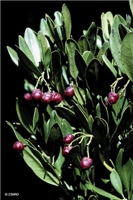 |
The very hard wood of this tree was used for making swords,
spear points, music-sticks, knives and fish-hooks. See Weapons
and
Tools. The wood burns very well and was used for firesticks to carry fire from place to place and as torches. See Firemaking. |
| jiigan Lomandra longifolia Mat Rush |
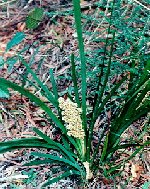 G.Steenbeeke © Orkology |
The leaves were woven into baskets. See Basketmaking. The soft white leaf bases were eaten. |
| jiman Tetrasynandra laxifolia Tetra Beech |
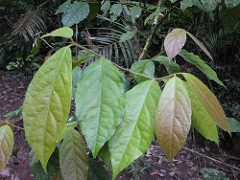 |
This was the preferred wood for the twirling stick used in
making fire. See Firemaking. Also used for spear shafts. See Weapons and Tools. |
| jubula Prumnopitys amara Black Pine |
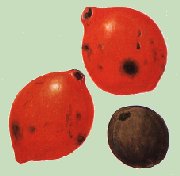 © William T. Cooper 1994 |
The starchy kernels were processed (cooked, ground and leached
in running water) before being eaten. See Food Processing. |
| julu julu Xanthostemon whitei Red Penda |
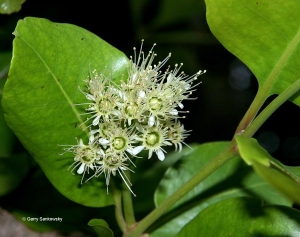 |
The hard wood was used for spear points and digging sticks. See Weapons and Tools. |
| jungganyu Calamus moti Yellow Lawyer Cane |
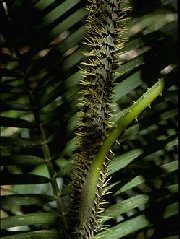
Photo - John Wrigley © ANBG |
A robust Lawyercane used for axe handles, framework of mija and
loops to assist tree-climbing. The leaves were often used to
thatch mija. See Shelter and Lawyercanes. The shoots of young rosette plants were eaten after cooking; said to taste like asparagus. Could have a laxative effect. |
| junjum Xanthostemon chrysanthus Golden Penda |
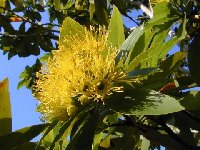 Photo - Samuel Fesuk |
Hardwood used for swords, spear points and digging sticks. See Weapons and Tools. |
| juubari Lepidozamia hopei Hope's Cycad |
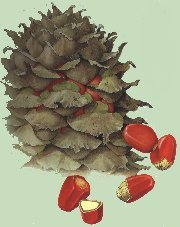 © William T. Cooper 1994 |
The large toxic seeds were eaten as a staple starchy food after
careful processing to remove the poison. See Food Processing. |


 Plants E-I
Plants E-I